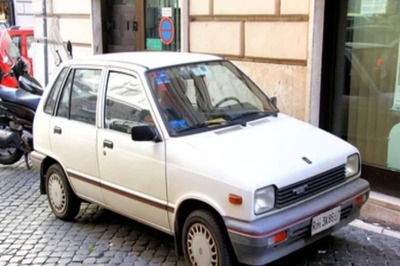
views
Indian Army soldiers posted on the icy peaks of Siachen Glacier were allegedly given inferior quality clothing procured from a Sri Lankan company in 2012, and no action was taken despite subsequent tip-offs, documents accessed by CNN-News18 show.
The documents suggest that the Lankan company, Rain Wear Pvt Ltd, cheated the Government of India to the tune of 28,0000 US dollars over the procurement of these inferior quality snow suits.
The trail of emails, letters and reports exposed by a whistleblower highlight the discrepancies in the clothing provided to the soldiers.
A letter dated August 24, 2015 written by a former employee of Rain Wear, which is part of a larger group called Ardmel, reveals that the company got the contract to supply three-layer snow suits in 2012.
The letter which was sent to the entire top brass of the defence ministry also clearly states the fraud of 28000 US dollars committed by the Lankan company.
In the 5th paragraph of the letter, the employee states that the second layer green fabric supplied to the Indian army jawans are no longer windproof and waterproof.
The employee specifically mentions that wind and water can easily seep in through the inferior quality jackets and pants and can trouble soldiers in the freezing cold.
What is worse, the fabric that is used in the snow suits can withstand temperatures only up to -15 degrees in Europe. The company has a subdivision in Europe where it supplies the same equipment by a different name.
The letter also alleges that there was a clear difference in the quality of material used during sampling, and at the time of bidding. The actual material sent to the Indian Army post the contract too was way different.
The allegation was, "Rain Wear pvt ltd changed to inferior quality material in all its shipments."
Over the last 10 years the Indian army has lost at least 869 of its men while protecting the icy glaciers which are considered to the most dangerous and difficult terrains.
Extreme weather conditions where temperatures could touch -40 degree celsius is one of the main reasons why it becomes all the more difficult to guard the Siachen Glacier.
NO ACTION
After the issue came to light, the whistleblower wrote a letter to the new government at the Centre requesting a probe and subsequent action against the culprits. Surprisingly, no action was taken.
The whistleblower then wrote another letter on December 28, 2015, where he even spoke of the threat to his life in Colombo after he chose to spill the beans.
He also states that an Indian High Commission Officer contacted him and promised to enquire, but never got back.
Frustrated by the lack of interest shown by bureaucrats and embassy officials, the whistleblower wrote to the PMO on January 23, 2016 requesting a probe into the supplies taking help from an international lab.
Five months later, the PMO responded and flatly rejected the allegations levelled by the whistleblower. It claimed that all due processes were followed while procuring the snow suits.
But then, another note on Rain Wear seems to challenge the all-clear signal given by the PMO.
TWO REPORTS
Two reports dated August 21, 2012, dealing with various sampling parameters of the snow suit, suggest major inconsistencies. For example, the minimum bursting strength sought by the Indian government was 600 KPA. Bursting strength refers to the seams and fastenings that ensures that the textile material doesn't split.
But the mean result in the test, when it was first conducted, was a lowly 562 KPA. Although this report isn’t signed, the figure of 600 KPA is clearly hand-written.
In another report based on two more parameters - colour fastness and tape weldability - the mean result shows 745 KPA.
what is surprising though is the fact that while one test fails the eligibility criterion, the other mysteriously exceeds expectations. The question that remains unanswered is how can there be two results for one test conducted on the same day on the same sample.
Also, was this test report fudged by the Sri Lankan company on its own so that it could procure the tender and simply show that the shipment it was sending to Indian army met required standards? And did the Indian defence establishment know about the existence of this report?
SOLDIERS LET DOWN?
It is not known how the allegedly inferior material may have got through the checks and balances of defence equipment acquisition.
There are two different stages of testing. One is the pre-dispatch inspection, which is done by a lab of choice of the vendor. And the joint receipt inspection which is done when the clothes arrive in India. There is no lab testing at the second stage.
On June 22, 2015, a letter written by the Department of Defence production to the Master General Ordinance office states: "Issues raised by the vendor seem to be based on high moisture and moderately cold to cold conditions which are not prevalent in Siachen. It is also pertinent to mention here that in one of the empowered committee meetings held in 2012-2013, it was brought out for the information of all members that the three layered snow suit supplied by Rainwear, presumably didnt perform up to the desired levels of satisfaction in some parts of Siachen glacier."
Yet the Defence Ministry, the Prime Minister's Office and all others were in were in consensus that all was well in the purchases. Was the Indian Army let down by the bureaucracy and elected representatives of the country?


















Comments
0 comment